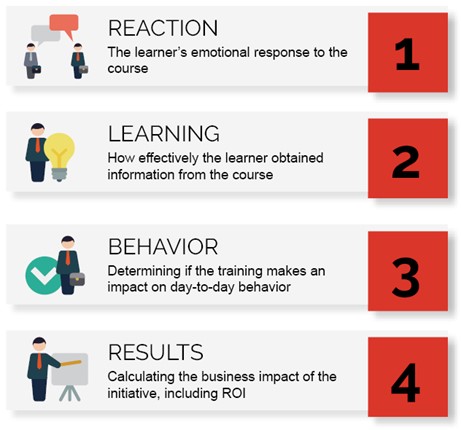
Despite being a major global industry worth about $70 Billion, Leadership Development is beset by scepticism. Many believe there is no pay-off as they see that 3 main challenges remain unsolved:
Research into the improvements made over the past 30 years show that there can be a good pay-off if certain criteria are fulfilled. This article describes the main improvements and takes that thinking a few steps further, showing how innovative digital technologies can be applied to boost pay-off on a consistent basis.
Many managers and HR professionals do not believe that leadership development programmes are effective. The literature is full of surveys documenting that organisations don’t think they are getting bang for their buck.
I was sceptical as well. I was responsible for HR in a company with operations in 26 countries and sales in 100. We had only one permanent leadership programme, for new managers. New Manager needs are undeniable and very similar, and it is easy to create a programme that gives real value. There were short-term upskilling stunts in technology areas, but I made sure there were no other permanent corporate programmes. I was pretty militant.
I now think I was simply not knowledgeable or creative enough to design programmes that worked.
By the way, ‘leadership development’ is used here to mean structured programmes aiming to improve leadership skills and develop the individual. Educational programmes based around specific courses in subjects like marketing, accounting or digitalisation are not included.
People’s scepticism is based on three key challenges not being solved.
The most basic of those is meeting participants’ needs.

There is no point in including topics that are not experienced as relevant by participants. They have to feel a real need to learn, either because the topic hits home personally or because they can see immediately how to apply what they learn in their own context, preferably to solve a pressing need. Lack of complete relevance, or delay until the learning becomes relevant, kills the effect of any development programme.
The organisation is often pretty good at defining organisational needs like more innovation, better co-operation or sharper thinking. The logic is that all managers need to develop in the key areas, but it is very difficult to make these needs, that are defined top-down, relevant to Mike and Mary Manager in Order Handling or Finance. Mike and Mary often do not recognise the need for themselves or their context.
Have a look at our article How to meet participant needs in leadership development programmes for some pointers on how to deal with the Needs challenge
The second challenge is how the learning should be transferred so that it is applied in practice. It would be great if the new competence just jumped from “Best Practice” research through a programme to the workplace. But that just does not happen.

Even if the learning is relevant for real needs, it can still be difficult to transfer it from an off-site context to real life. To be as relevant as possible for all participants, programmes teach generalised concepts and approaches. It is challenging to translate generic concepts into useful practice.
In addition, the work context the participant comes back to after training can be problematic. For example, the participant’s colleagues can ignore, not be curious about or resist any new ideas and changes. The participant’s boss is often not close enough to the situation to provide relevant support. Even worse, the boss can often negate new approaches through disinterest or lack of information. And everyone’s days are so busy that it is difficult to find time and things are quickly forgotten.
The third challenge is how to measure the impact of any particular programme. It is especially difficult to tie programmes to bottom-line results.

Organisations really struggle to prove that what is learned in a development programme impacts results like more efficiency, stronger innovation or happier colleagues.
For such a large industry it is a disaster not knowing whether the investment pays off.
We outline some answers to the Measurement problem in How to measure the impact of leadership development .
With these three challenges it is no wonder so many organisations do not believe that they are getting a return on their investment in leadership development.
Organisations and leadership developers are aware of these challenges and have been working to overcome them for 30 years. A very thorough meta-analysis performed by Lacarenza et.al. in 2017 , summarising the findings of 335 individual studies, shows that good practice can work. Leadership development drives results when it is delivered in the right way.
The researchers used the classic Kirkpatrick framework for their research. The idea is that there are 4 types of effect, each one leading to another, each more important than the last.

The first is that the Reaction has to be positive, supporting effective Learning that leads to changes in Behaviour that drive Results.
That sounds simple but it is especially hard to measure levels 3 and 4. So called ‘smile sheets’ filled in after a session give data for level 1; tests of retention for level 2. Few apply such tests, but they are quite easy to do, in theory.
Have a look at How to measure the impact of leadership development for some answers. With traditional leadership development it takes a major research effort to measure level 4 Results. Most organisations are not able to allocate the necessary resources.
Lacarenza et.al. found that the effect on results was greatest for programmes that:

Lacarenza et.al. found that well designed leadership training programmes give significant effects at all 4 levels of the Kirkpatrick framework of measurement.

These results are amazing and very encouraging. They put sceptics like me to shame. The question remains how to operationalise the findings in practice.
We have 3 recommendation regarding leadership development work.
Like all high-level recommendations, the value lies in unpacking them.

The content is often more interesting and challenging than the plain wrapping might suggest.
Effective leadership development is the sum of the steps in a process, not a learning event. HR is often too focused on the event, and too little on the overall process.
We believe that organisations should apply the following process:
Need → Baseline → Prepare → Engage → Apply → Measure
The ‘Engage’ step refers to the leadership development programme itself. The focus is to engage the participants. The other steps occur before and after. The sum of all 6 steps drives the programme’s impact. The organisation should support the participant in moving through each of these steps. Each step is described below.
Learning is a process that starts with a need. Change doesn’t come without one. Rehabilitation for an alcoholic starts with “My name is Jim; I am an alcoholic”. In making such a statement publicly, Jim recognises the unacceptability of the status quo and the need to do something about it. He will now be open to learning new ways of mastering his challenges.

Recognising personal development needs is complicated at the best of times. For leaders in an over-busy world have their own particular challenges. Aggregating those needs for the multiple cohorts that go through leadership development programmes is also difficult. No wonder Needs is one of the 3 key challenges. Have a look at our article How to build a needs-based leadership development programme for some answers.
Leadership development costs money and time. We often have little of both. We need to make sure that our investment is paying off. Taking the extra time involved in defining a baseline and measuring effect against that baseline, is a ‘must do’.

Using before and after 3600 measurements is the most common way of doing this. It isn’t very complicated but there are a number of pitfalls to be avoided. Have a look at our article How to measure the impact of leadership development for a practical guide to how to do this.
Clarifying the need, defining the baseline and setting a date for a programme are all part of preparation. But there is more. The more prepared and eager the participant, the better the learning outcome.
It is like packing to get ready for a trip. As you pack you visualise what can happen, develop strategies for dealing with challenges, and come up with new ideas for what you could do.

There are many practical things the participant can engage in that build excitement and expectation:
Learning programmes have to be absorbing and engaging. Ideally , they should be seen as life-changers. This is rare for drier topics but not impossible. We have experience of both creating, running and participating in leadership development programmes that have changed lives.

We recommend 5 hacks for boosting engagement:
Each of these is described in the article How to boost engagement in leadership development programmes.
Lastly, Apply. Mastery takes a lot of active practice. Gladwell’s 10,000 hours rule for the Beatles or Bill Gates to achieve excellence in what they do is imprecise but sets the frame correctly.
Digitalisation can also help participants apply learning more effectively. Short digital attention spans mean that sessions are best kept short, preferably less than 2 hours.

Programmes should be spread out over time. This leads to learning in the programme being applied immediately after the session and discussed in the session the next day.
Short attention spans also mean that things must be simplified, and learning goals sharpened. Content designers are more disciplined as they cannot rely so much on the trainer to manage the flow. Learning is chunked in smaller packages and better structured. This is easier to apply.
This recommendation builds on what is written above on needs, building engagement and focusing on application, but goes further.
It points to standing in the participant’s shoes rather than being caught up in ‘you’ as the facilitator or program designer, wanting to communicate a message, be effective or clever, and shine yourself.

This is difficult in work life. Employees are rewarded for being active, competent, and full of initiative. Targets, short term pressure and competition all push us to being caught up in our own stuff.
The people designing and delivering leadership have their own particular challenges as well. The HR function, that usually owns such programmes, is often viewed as a soft function that needs to prove its value. Being seen to be knowledgeable and business oriented is the route to respect. Helpfulness can contribute too but is often taken for granted, giving less of a respect pay-off.
External trainers and consultants have an even tougher time truly putting participants first, whatever they say. The external person must prove their worth just to get paid. At least HR has job security. The external lives off their competence, on an hourly basis, and must demonstrate it continually.
The concept of “Servant Leadership ” can help as a mindset for the people working in leadership development. As Robert K. Greenleaf (who first launched the concept) said, the servant-leader is servant first, as opposed to many leaders that are leader-first. They are extreme opposites.

A servant-leader focuses primarily on the growth and well-being of people…shares power, puts the needs of others first and helps people develop and perform as highly as possible.
The key to making such a mindset work is to prove its value by measuring outcomes. Have a look at How to measure the impact of leadership development for some tips.
And lastly, the most commonly mentioned barrier to acting on what is learned is lack of time.

Part of relating everything to the participant’s context also means needing to be protected from overload .
Our last recommendation for making leadership development work in practice is to reinforce accountability for everyone. This means the leader’s team, boss, boss’ boss, colleagues, HR and the training provider. It also means creating new roles such as in-class learning partner and at-work learning partner. Mutual accountability between the participant and this community considerably increases the chances of success.
And of course, the most important person to make accountable for the participant’s learning is the participant themselves.
Making leadership development work in practice is very challenging. There are major differences between how well organisations manage the development of their leaders. Following the 3 simple recommendations described above can help:
If you like what you have read download our e-book. We have applied our own medicine to a programme that supports a manager’s success inside their first 100 days in a new role. Supporting success early is the most effective approach of all to leadership development!
Organisational psychologist with an MBA. Broad top management experience spanning many industries, functions and countries, including 10 years with corporate responsibility for HR. Extensive experience as consultant in private, public and voluntary sectors. A number of board positions in the education and culture sectors. Started career as counsellor for drug and alcohol abusers.
We write professional blogs worth a read.
Follow the blog for a sneak peek of the future!
* By subscribing to our newsletter, you agree to receive digital communications. You may withdraw this consent at any time.

May 10, 2021 - Richard Taylor C. Psychol., MBA
Leaders need help to succeed in a new role when so much changes, and expectations are so high. Springboarding..

Nov 01, 2020 - Richard Taylor C. Psychol., MBA
We all use google searches to find answers to our questions. We often look at the videos google suggests for..

Nov 01, 2020 - Richard Taylor C. Psychol., MBA
Many are sceptical to the return on the investment made in leadership development. A promising new approach..